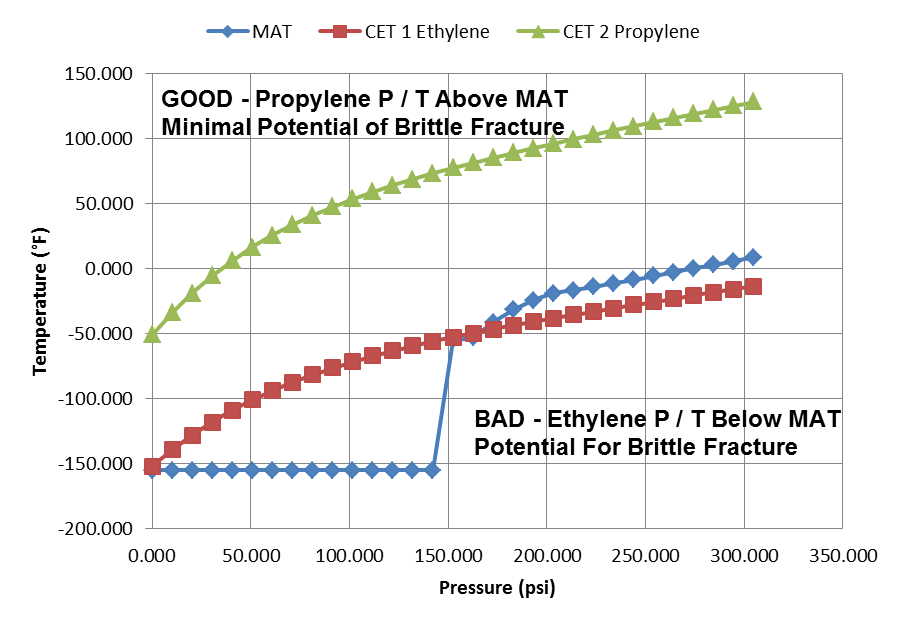The graph illustrates a brittle fracture analysis result where the low temperatures caused by an auto-refrigeration event could lead to brittle fracture.

We use cookies to help you navigate efficiently and perform certain functions. You will find detailed information about all cookies under each consent category below.
The cookies that are categorized as "Necessary" are stored on your browser as they are essential for enabling the basic functionalities of the site. ...
Necessary cookies are required to enable the basic features of this site, such as providing secure log-in or adjusting your consent preferences. These cookies do not store any personally identifiable data.
Functional cookies help perform certain functionalities like sharing the content of the website on social media platforms, collecting feedback, and other third-party features.
Analytical cookies are used to understand how visitors interact with the website. These cookies help provide information on metrics such as the number of visitors, bounce rate, traffic source, etc.
Performance cookies are used to understand and analyze the key performance indexes of the website which helps in delivering a better user experience for the visitors.
Advertisement cookies are used to provide visitors with customized advertisements based on the pages you visited previously and to analyze the effectiveness of the ad campaigns.
Auto-refrigeration can impose low-temperatures onto process vessels and piping causing them to be at risk of brittle fracture. Brittle fracture is the sudden break-before-leak phenomena that can result in catastrophic rupture of the equipment. Operating excursions and the resulting auto-refrigeration conditions with subsequent recovery chain of events can be evaluated to determine if the equipment is subject to this potential process hazard. If this vulnerability is identified, a layer of protection analysis (LOPA) can be executed to evaluate and develop mitigation actions.
At Stress Engineering Services, we use a comprehensive approach to identifying susceptible equipment, executing the brittle fracture analysis, and performing the process hazards analyses to evaluate and develop mitigation for at-risk vessels and piping. With this approach, the equipment is evaluated using Part 3 of API-579-1 / ASME FFS-1 Fitness for Service methods to develop a minimum allowable temperature (MAT) curve. Process hazards scenarios are developed using the dynamic and sequence driven methodologies to compare to the equipment MAT curve. If adequate mitigation cannot be attained through normal means (administrative controls, alarms, interlocks) additional computational analyses is performed and potentially justifying the fitness for service of the equipment under this excursion condition.
For years, our brittle fracture engineers have successfully applied this method on thousands of vessels and piping systems at chemical, refinery and offshore facilities. Our analysis methods, coupled with our highly experienced personnel provides clear scenario descriptions and can indicate potential fitness for service risk, thus allowing for the development of lowest life cycle cost for mitigation.
If you would like more information on Stress Engineering Services, please call us at 281.955.2900, or complete the following form and one of our representatives contact you shortly. For a complete listing of contact information, visit our Locations page.
"*" indicates required fields
Notifications